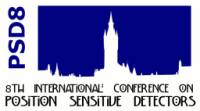Speaker
Peter Hobson
(Detector Development Group)
Description
The Electromagnetic Calorimeter for the Compact Muon Solenoid (CMS) experiment at the CERN Large Hadron Collider (LHC) has lead tungstate crystals as the active medium. The photodetectors used to detect the scintillation light must be fast, sensitive, radiation-hard, and operate with significant internal gain in a 4T magnetic field for many years. CMS developed two different technologies to satisfy these requirements. In the central subsystem of the electromagnetic calorimeter 5x5 mm2 silicon avalanche photodiodes (APD) are used. In the forward/backward regions, where the radiation levels are highest, single-gain-stage, photomultipliers (vacuum phototriodes (VPT)) are deployed. The design and performance characteristics of the custom-designed APDs and VPT are described, the techniques used to ensure radiation resistance and quality assurance of over one hundred thousand individual photodetectors are discussed, and the performance of the overall calorimeter is presented.
Author
Peter Hobson
(Detector Development Group)

